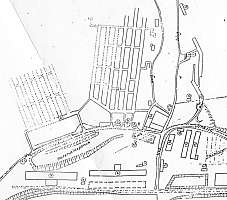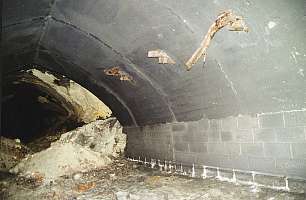The “KELLERBAU” Underground Plant at Gusen

Construction of this plant started in late 1943 in the hills directly north of the KZ Gusen I concentration camp. Several tunnels show different construction characteristics – some were lined with concrete and others with granite or bricks.
It appears that the SS implemented this project quite early and experimented to build such tunnels with construction material that was easily available at KZ Gusen like granite blocks.
The Kellerbau tunnels were assigned primarily to the two DEST contractors at Gusen, Messerschmitt GmbH and Steyr-Daimler-Puch AG. Messerschmitt started production of Me-262 parts there during 1944. When the Bergkristall tunnels became available in autumn 1944, Messerschmitt moved to St. Georgen/Gusen and left most of the Kellerbau tunnels for Steyr-Daimler-Puch AG. Steyr-Daimler-Puch AG produced parts for machine guns already in early summer 1944 at Kellerbau.

One tunnel was also assigned to the “Waffentechnische Lehranstalt (WTL) Graz” (defense technology college) of the SS in the final phase of the war.
Also some institutes of the “Technische Hochschule Graz” (technical university) that were moved to Gusen in late 1944 were hided there.
The Kellerbau tunnels were also very close to the conventional (above ground) production facilities of Messerschmitt GmbH at Gusen that were officially called “Messerschmitt Zweigwerk (branch plant) St. Georgen/Gusen”.
Towards the end of the war most of the tunnel entrances were closed with masonry and loaded with explosives to exterminate most of the KZ Gusen inmates by blasting them off with the tunnels shortly before the arrival of any liberators.
For this purpose, the inmates were trained several times to run into these tunnels at airraid alarms. Survivors told that the SS intended to fake one such alarm at the end of the war to finish all off. Fortunately this order not carried out.

-oOo-
#RememberGusen